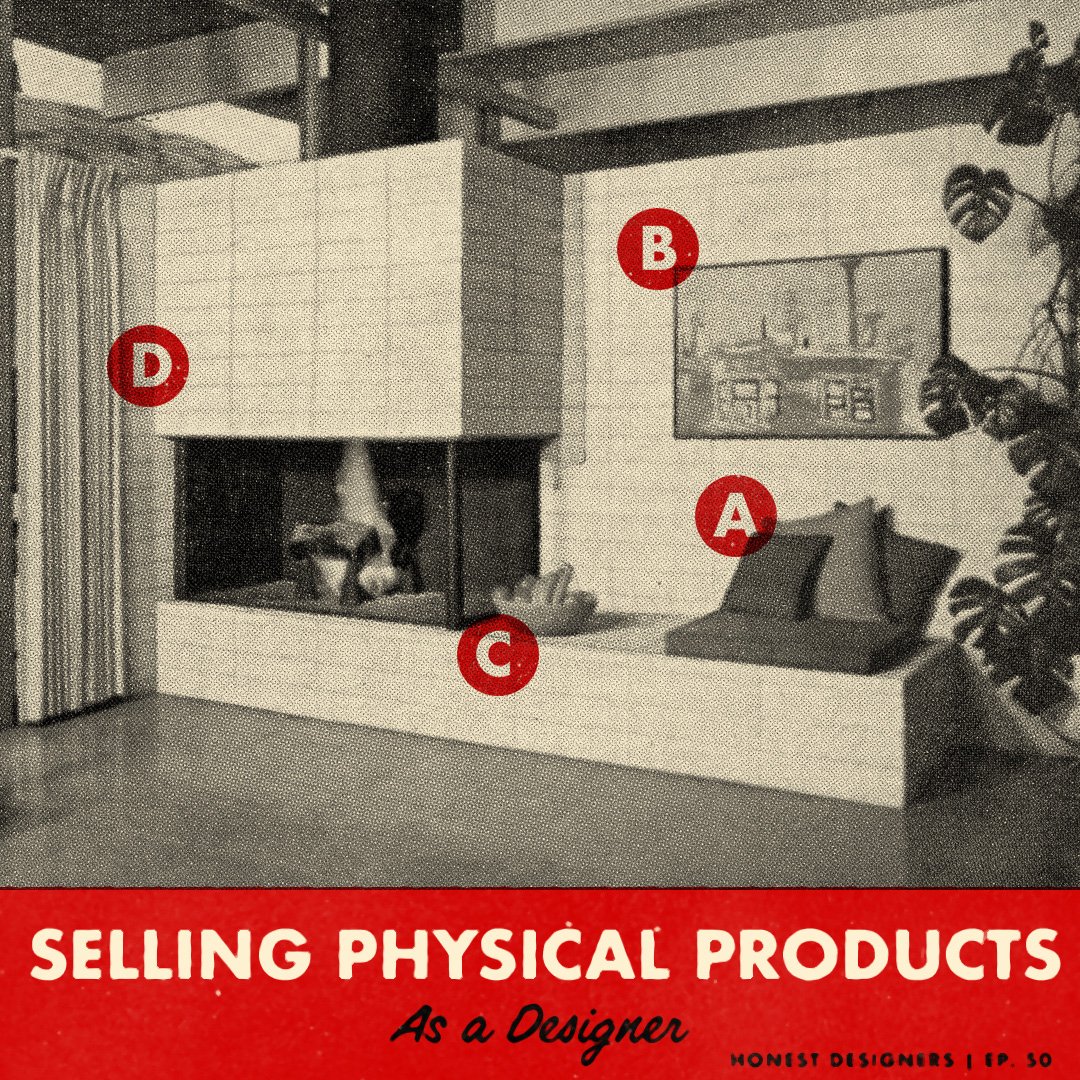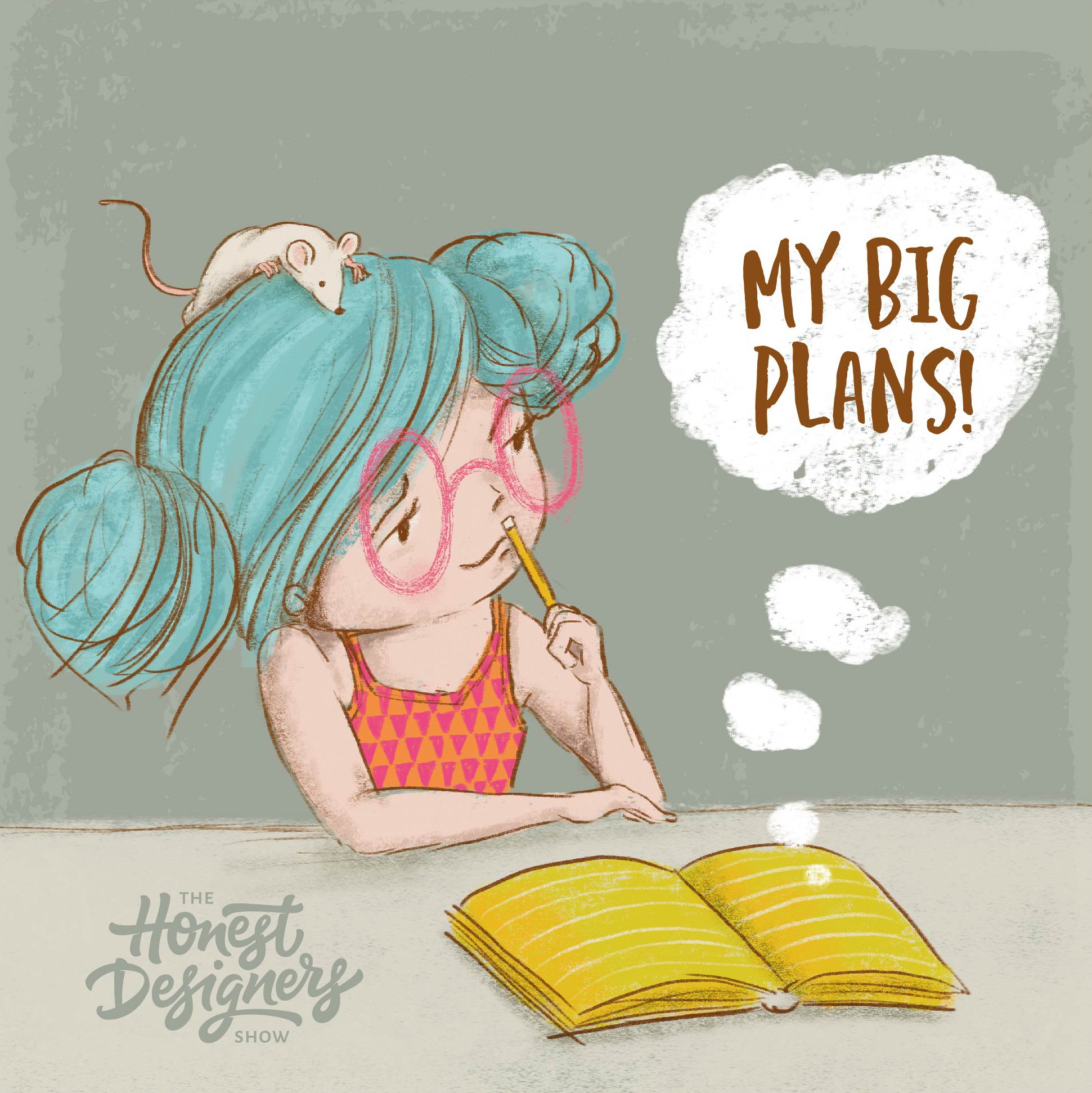In this week’s episode we talk about how selling physical products as a designer. From posters to t-shirts, this is an in-depth look at how to bring in some additional income by utilising your creative skill set. Just to caveat that none of your hosts are experts, but we do come at this from the same perspective as many of our listeners, trying to just figure out, brainstorm and work out the best course of action for selling physical products.
[smart_track_player url=”http://traffic.libsyn.com/honestdesigners/HD_50.mp3?dest-id=468740″ social=”true” social_twitter=”true” social_facebook=”true” social_gplus=”true” title=”Episode 50: Selling Physical Products as a Designer”]
Watch more of the Honest Designers episodes here: Honest Designers Podcast Playlist And remember to subscribe to our YouTube channel for regular updates direct to your inbox.
Show Notes for This Episode:
[1:15] This week we talk about selling physical products as a designer
[1:40] Jo Fallon of ‘The Creative Journey” is thinking of launching an Etsy shop as an additional source of income to her business: The Cotswold Chalkboard
[2:20] The hosts sum up their experience with creating and selling physical products
[3:00] Lisa had and Etsy shop selling stationery and jewellery
[3:40] The high postage costs in South Africa made it difficult for Lisa to sell her products internationally
[4:40] Retro Supply Co. now sells: shirts and stickers and a product called: “I want it all box” for $497 which includes a variety of digital and physical products
[5:30] Ian got some of his artwork printed but is yet to make a profit from selling them
[6:30] The hosts joke and compare themselves with a bad version of the A-team
[7:00] Tom would like to have a guest on the show with lots of experience on the topic
[7:40] Tom suggests listing the types of products the designers could sell
[8:10] Posters, high quality prints, die cut prints could work very if they are marketed correctly
[8:40] Ian’s prints didn’t do very well so he’s not very keen on selling these in the future
[9:40] He did a poll asking which products his audience will buy, but when the time came the products where not very successful
[10:20] He also tried to sell t-shirts through Cotton Bureau
[11:10] Ian lists shipping costs as one of the main issues for selling physical products
[11:50] Tom’s example of a mum who started selling products as a side project and has a very successful product
[12:45] You need to try lots of different products before you can find the one that does very well
[12:55] Get your products in front of the right consumers: e.g become a member of a few Facebook groups
[14:00] While selling via her Etsy shop Lisa fount that art is difficult to sell, but jewellery and stationery did much better
[14:30] People like trinkets – e.g. a wood plank with Home Sweet Home printed on it
[15:40] A popular Youtuber shared Ian’s products and got hundreds of orders for his products
[16:30] Tom suggests Ian should buy items that are not very expensive, show the process of drawing on them and make them available for purchase
[17:00] Ian’s worry is that the preparation process is very long and it will be wasted time if the product is not a success
[18:00] People might not want to pay the price you’re asking for the work you put in
[18:40] Find a production method to quickly print more items, selling these for a cheaper price than the original
[19:20] Lisa believes that is harder to sell fine art than other products which involve less commitment
[20:00] Make your product: funny, memorable and most importantly giftable
[21:15] Think about distributing your products locally and contacting some shops in your area
[21:40] Before her Etsy shop, Lisa used to sell her products at local markets
[22:50] Dustin’s theory – designers are the worst people to try and sell t-shirts and prints
[23:30] When selling to a non-designer market you need to create quality design and messages that appeal to the audience
[24:15] People will only buy a designed t-shirt when it expresses something about themselves
[25:10] Dustin’s hero product the “I want it all box” was born from the audience’s struggle to download all the products and he solved this problem by putting them all on a flash drive
[25:40] The designers create digital products for the market, not for themselves
[26:00] Dustin thinks Ian’s violin was a success because it was a statement object
[27:00] Tom speaks about custom orders and says the perfect combo for him would be a guitar with a quote about entrepreneurship
[27:20] Facebooks advertising is extremely beneficial as it offers highly targeted adverts
[28:15] Tom fell for this and bought a poster of his favourite movie
[29:20] How fast Google adverts work – from searching for certain items on Google and almost immediately seeing adverts for those items on every other website you visit
[30:00] Dustin example of clicking on a link and being inundated with adverts he didn’t want
[31:10] The host lists more products that could sell well: books, Logo Lounge books, Field Notes by Aaron Draplin
[32:30] Dustin lists: enamel pens and stickers as products that are quite popular now
[33:15] Start paying attention to what is selling in your chosen medium
[33:30] Tom talks about Just in Time production and the benefits of using these printing service
[34:30] And Dustin lists one of its disadvantage
[35:00] The photos of your physical products are just as important as the previews for your digital products
[35:00] Dustin asks the hosts if they can remember the last products they’ve bought online
[37:20] He remembers when bands use to sell CDs and ended up with garages full of CDs waiting to be sold
[38:00] Keep trying until you find the one product that it’s successful
[39:00] Ian hasn’t been very successful with his first try at selling prints, but this shouldn’t disappoint him as first sale is the hardest
[39:20] Use a site like Redbubble to test if your product works
[39:45] Validate your ideas by getting your audience to vote
[40:20] Ask for the money upfront, and only send the designs to print when you get 50+ orders
[41:10] The hosts believe Ian would be successful if he did custom designs on items
[41:00] Think about licensing your designs to a company that has the means of scale production
[42:30] Lisa suggest trying local markets or approaching local shops
[42:50] Friends and family can be your first customers and they can recommend your products through word of mouth
[43:40] Ask your audience what is the last gift you’ve purchased for yourself or from someone else
[44:00] Tom’s idea of a marketplace that can suggest the perfect present for specific people
[45:20] Use Amazon’s information and validate how well things sell
[46:30] The host hope the audience will find this information useful
[47:00] Learn from other people’s fails
[47:30] Find the right fit in the market for your product
[48:00] Think of your audience and cater for them
[48:30] For products with low utility: e.g. prints or t-shirts make its helping the customer to express themselves or they personality
[48:50] Focus on how you’re going to sell your first product
[49:00] Thanks so much for listening to this week’s episode
“A must for every creative freelancer (or those aspiring to freelance). Thank you for being so… honest! Such a wealth of information from people I admire who have ‘been there and done that’. Listening to the podcast every week feels like I’m among friends. Can’t wait for more episodes!” – AG_GD






Be the first to comment